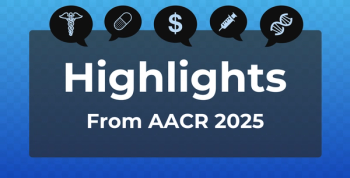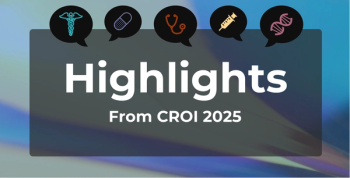
Upfront HSCT More Cost-Effective for Patients With AML in Remission
Key Takeaways
- Upfront hematopoietic stem cell transplantation (HSCT) is more cost-effective than delayed HSCT for patients with intermediate-risk acute myeloid leukemia in remission, with higher incremental net monetary benefits in the US and the United Kingdom.
- High relapse rates in patients delaying HSCT contribute to increased costs, including reinduction chemotherapy and associated complications.
Proceeding with hematopoietic stem cell transplantation (HSCT) is more cost-effective than delaying the procedure in patients with intermediate-risk acute myeloid leukemia (AML).
Upfront hematopoietic stem cell transplantation (HSCT) is the cost-effective option for patients with intermediate-risk acute myeloid leukemia (AML) who are in remission.
Research found that proceeding with HSCT is preferable to delaying transplantation until after consolidation chemotherapy from a system-level economic perspective. The study was
The new study
Yet, while ETAL-1 helped shed light on the impact of the 2 treatment approaches on patient outcomes, it did not delve into the financial implications of the different approaches.
In the new report Jan Bewersdorf, MD, of Yale University, and colleagues used data from the earlier trial to develop a partitioned survival analysis model that compared the cost-effectiveness of upfront HSCT versus “delayed” HSCT in intermediate-risk patients with AML in their first remission.
“By incorporating AML-specific clinical outcomes, costs, and quality of life data, this research seeks to provide guidance for optimizing treatment decisions in intermediate-risk AML in both the United States (US) and the United Kingdom (UK),” Bewersdorf and colleagues wrote.
The study’s primary outcome was the incremental net monetary benefit (INMB) for the US and UK, using willingness-to-pay thresholds of $50,000 to $150,000 per quality-adjusted life year (QALY) and £20,000 to 30,000 per QALY.
The investigators’ findings favored upfront HSCT. They found the INMB for upfront HSCT was $497,100 (95% CI, $259,800-$719,600) and £235,600 (95% CI, £166,800-£298,500) using the higher end of the willingness-to-pay thresholds. When the authors performed sensitivity analyses, they found that upfront HSCT was consistently cost-effective and was more cost-effective than delayed HSCT in 90% of scenarios.
“Our findings show that upfront HSCT dominated delayed HSCT, meaning that it is less costly and more effective for intermediate-risk AML in both the US and UK healthcare settings,” Bewersdorf and colleagues wrote.
The main reason for the cost advantage of upfront HSCT was the high rates of disease relapse in patients who delay transplantation, the authors explained. Those relapses lead to excess costs, such as the need for reinduction chemotherapy and an accompanying risk of complications and healthcare utilization. The authors pointed to a
Still, Bewersdorf and colleagues wrote that the decision to proceed with HSCT or delay it is one that must be informed by an individual patient's clinical context, including factors such as the availability of a donor and the patient’s comorbidities. They added that their report can be seen as a tool to inform decision-making from a health-system perspective.
References:
- Alhajahjeh A, Patel K, Podoltsev NA, et al. Cost-effectiveness of upfront vs delayed allogeneic hematopoietic stem cell transplant for intermediate-risk AML. Blood Adv. Published online July 28, 2025. doi:10.1182/bloodadvances.2025016532
- Bornhäuser M, Schliemann C, Schetelig J, et al. Allogeneic hematopoietic cell transplantation vs standard consolidation chemotherapy in patients with intermediate-risk acute myeloid leukemia: a randomized clinical trial. JAMA Oncol. 2023;9(4):519-526. doi:10.1001/jamaoncol.2022.7605
- Burnett AK, Goldstone A, Hills RK, et al. Curability of patients with acute myeloid leukemia who did not undergo transplantation in first remission. J Clin Oncol. 2013;31(10):1293-1301. doi:10.1200/JCO.2011.40.5977
Newsletter
Stay ahead of policy, cost, and value—subscribe to AJMC for expert insights at the intersection of clinical care and health economics.









































